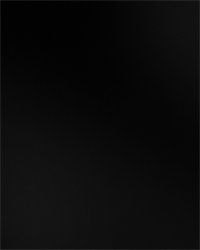skip to main |
skip to sidebar

i heart photograph: could you talk a little bit about the project this work is from and some of the impulses behind it?
phil chang: 'untitled (peel #2)' comes out of an interest in experimenting with seeing and the seemingly tangible connections that determine what we visually witness. in one way, the piece attempts to elude photographic depiction by playing with two surfaces: that of the depicted object whose corner is peeling as well as the flattened surface of the final photograph. on another level, the piece attempts to defer exposure and postpone the customary function of exposure through the release of the camera's shutter. the piece is made through two simultaneous exposures–one digital and one analog–using photographic paper, a scanner, and the chemical reaction of exposure to produce the final image.
moreover, this piece is part of a larger project that belongs to an exhibition that two other artists and i are organizing. the project asks whether faith, idea, and physical absence can converge in photographs that yield their strongest felt presence in what they propose rather than what they depict.
i.h.p.: you say that the work is part of a series relating to 'faith, idea and physical absence,' could you talk in more general terms about how you relate those ideas to abstraction in photography?
p.c.: in 2005, two other artists and myself began organizing a group exhibition inspired by robert barry's radio wave pieces from 1969. barry installed radio transmitters in an empty office space in nyc and titled the work '88mc carrier wave (fm)' and '1600kc carrier wave (am).' the work was invisible to the naked eye and fit alongside other conceptual works of the time that emphasized ideas over objects. what was interesting about barry's project was that he also photographed the radio wave pieces, which, of course, resulted in a photograph of the empty office space that was being used as the exhibition space. this documentation then serves as the starting point for our exhibition. a photograph of something that can't be seen immediately throws the entire photographic enterprise off center and this was very interesting to us. looking back at barry's work, the logic that he applied to his practice and the sheer fact that he followed standard protocol photographing an invisible work of art inspired us to ask, 'how can we rethink the aesthetic and conceptual possibilities of photography?'
as far as faith, idea, and physical absence, these three criteria operate to summarize the premise of the exhibition and relate to abstraction as a strategy to offset representational uses of photography–uses where the object and subject of a photograph are ostensibly or directly transparent.
i.h.p.: given such a highly technical and specialized process, do you think something may be lost (or gained) by a viewer with little knowledge of photo-making processes, and if so, what?
p.c.: the question of whether content or information runs the risk of getting lost or gained in the work is a great question. i feel as if taking a corollary example might be a good way to approach this. photographs that offer representational or indexical transparency to what is being depicted have the opportunity to at least rely on a correspondence with the thing that it has recorded. so, if anything, what could be lost due to the process of making this work is the reliance on representation to aid in the production of meaning.
with 'untitled (peel #2),' i was interested in exploring an experience of simultaneity as a way to address the exhibition premise that i mentioned above. i asked the question how does one photograph that which can't be seen? my answer to this was to record a simultaneous exposure using unexposed and expired sheets of black-and-white paper and a scanner. as the b+w paper is being exposed to the light of the scanning device, the scanner itself is also recording the final image, which is an image of the b+w paper being exposed to the illumination from the very device that is recording it. i wanted a circularity to this process which was a strategy of offsetting representational impulses in the interest of gaining meaning from the process of the work. lastly, i was very interested in 'resurrecting' an expired form of photographic material–expired both in functional value and, soon, as a widespread material within photographic practices. this resurrection took place by illuminating the expired and unexposed sheets of b+w paper for it's very recording.
[photo: untitled (peel 02) by phil chang. see more of phil's work here.]
interview is a weekly column by nicholas grider that appears each tuesday on i heart photograph.





























